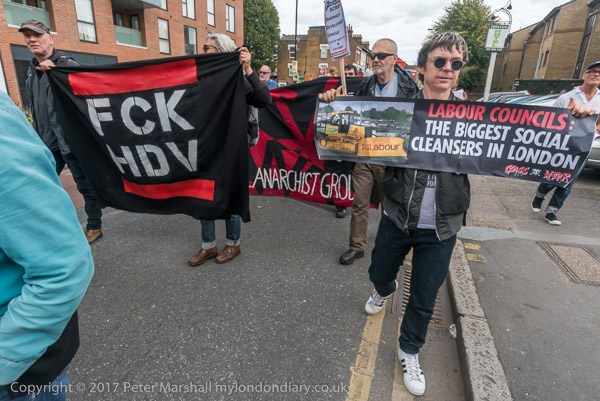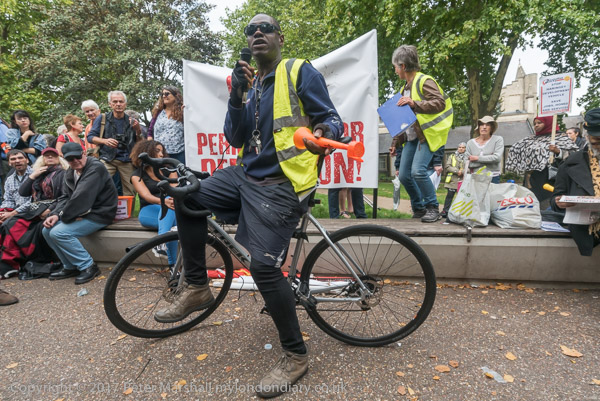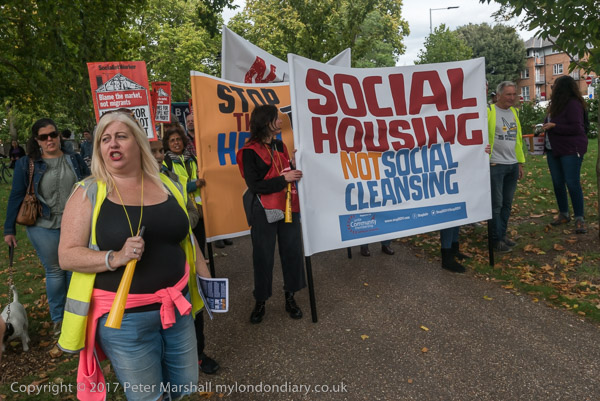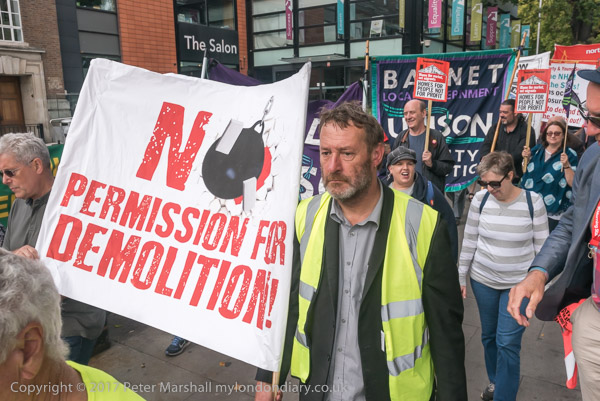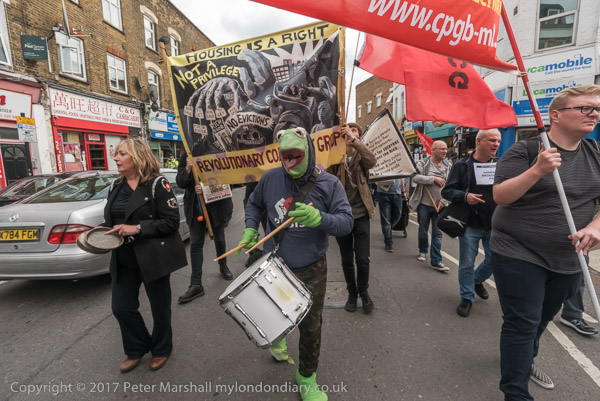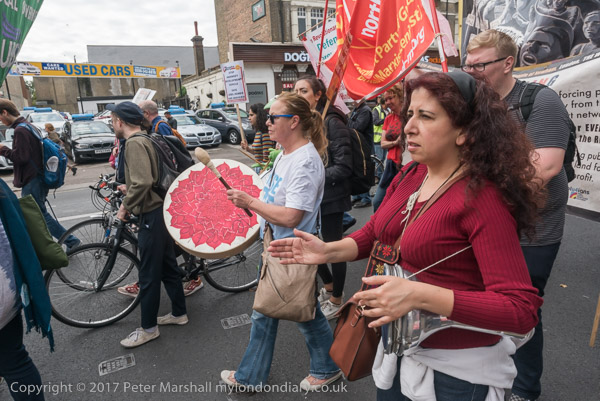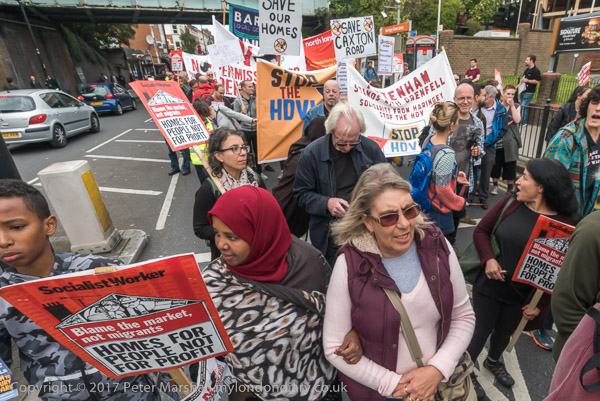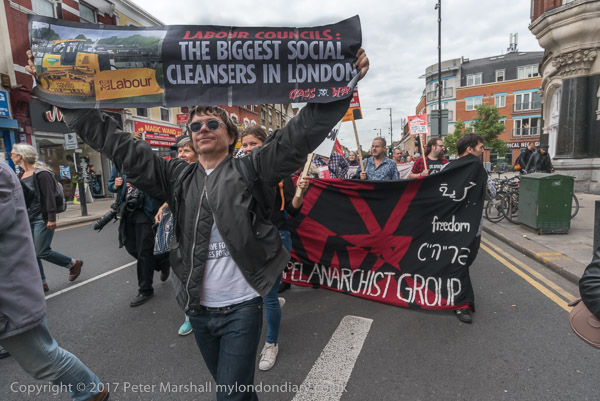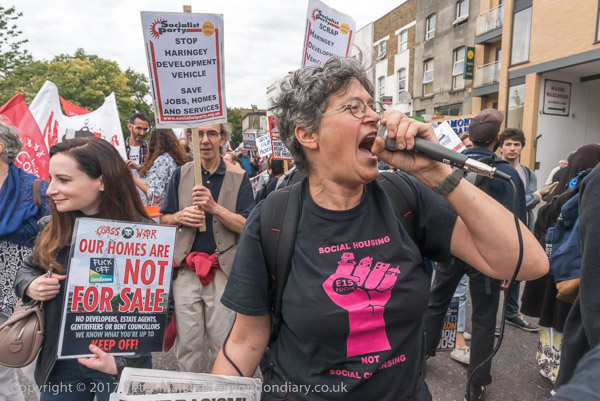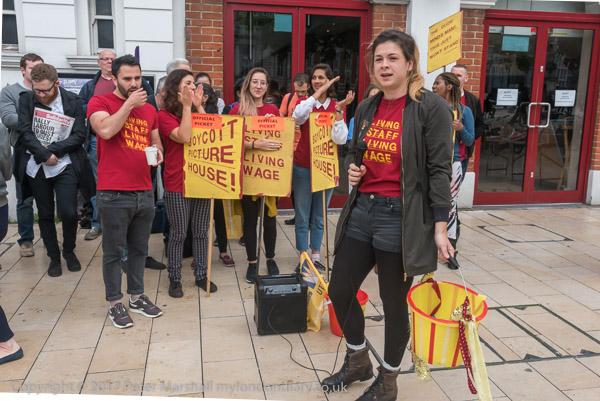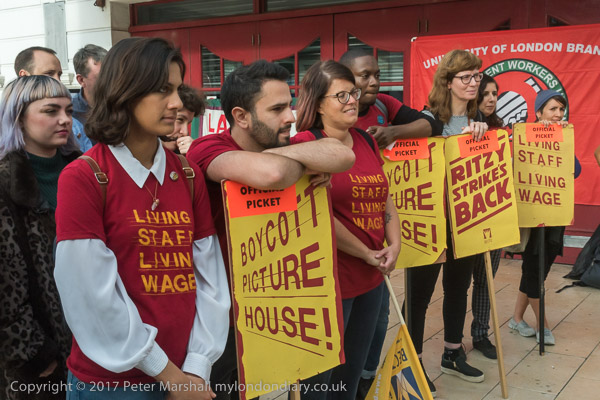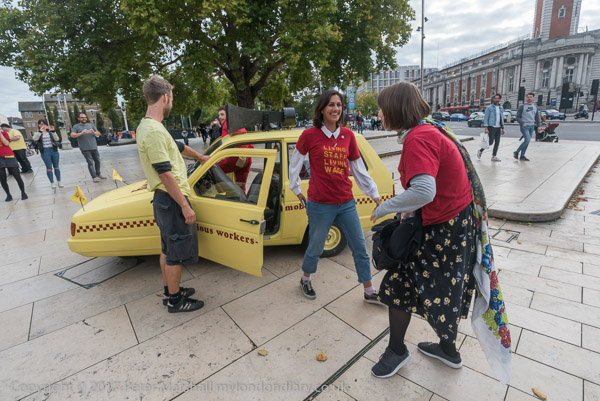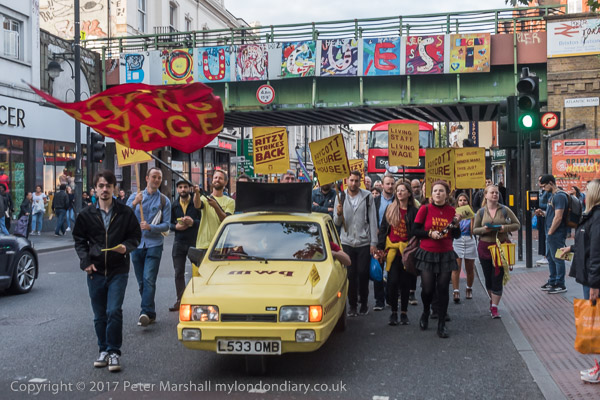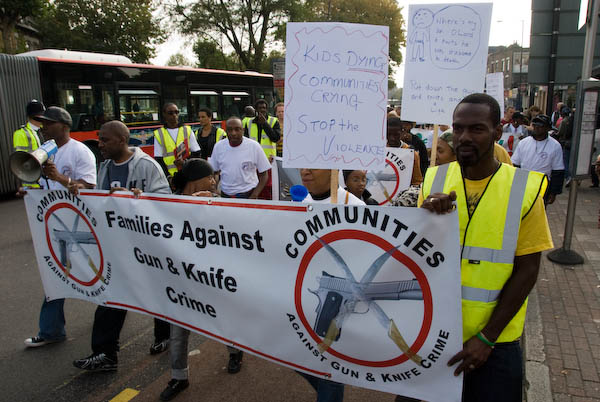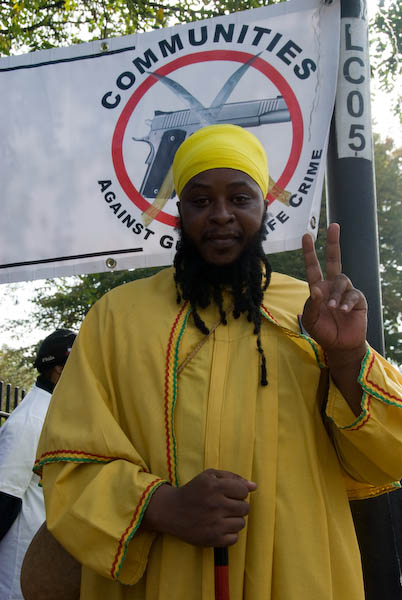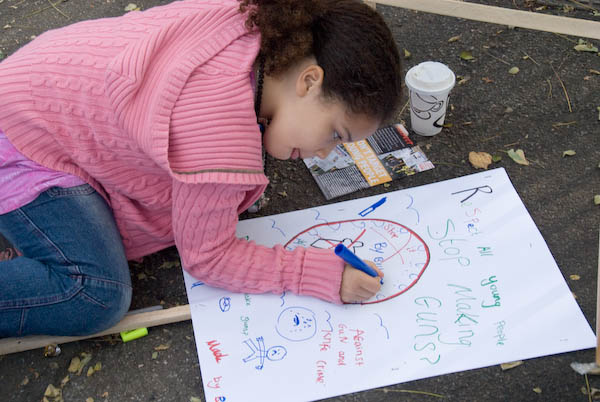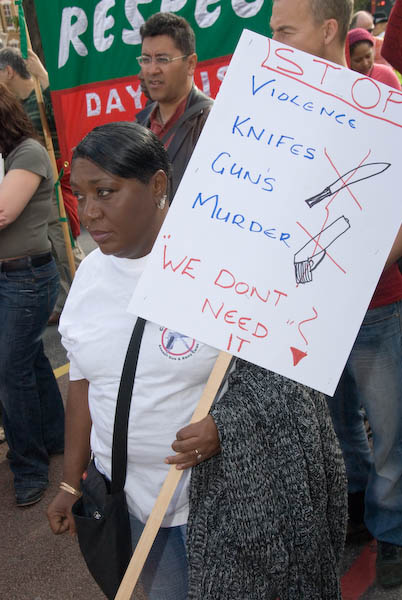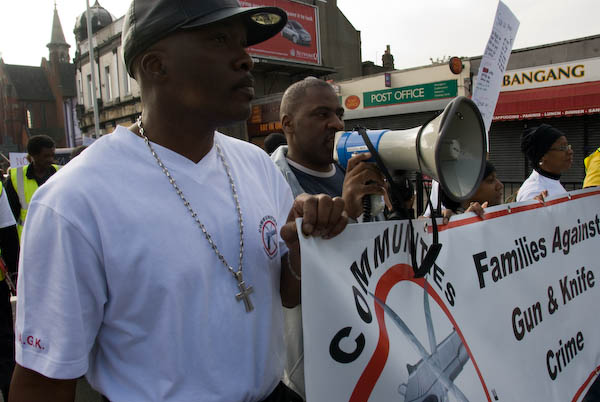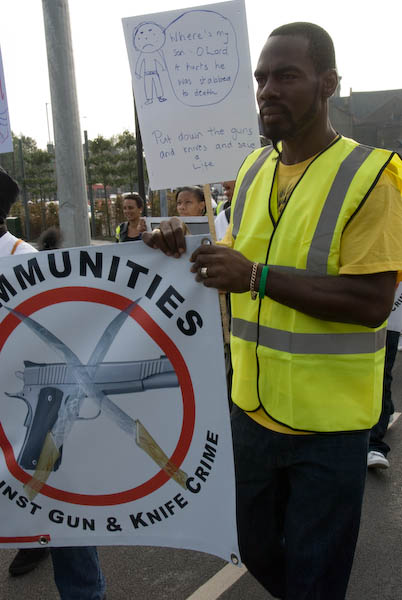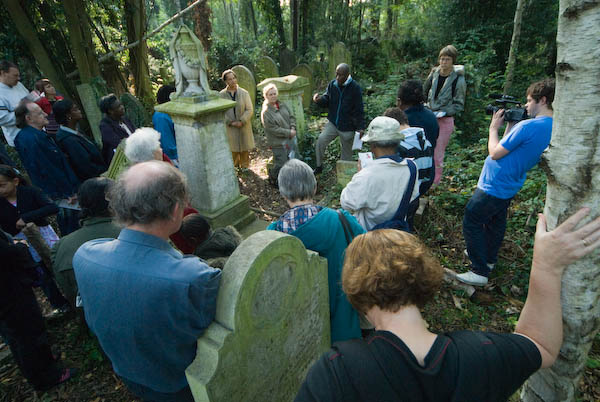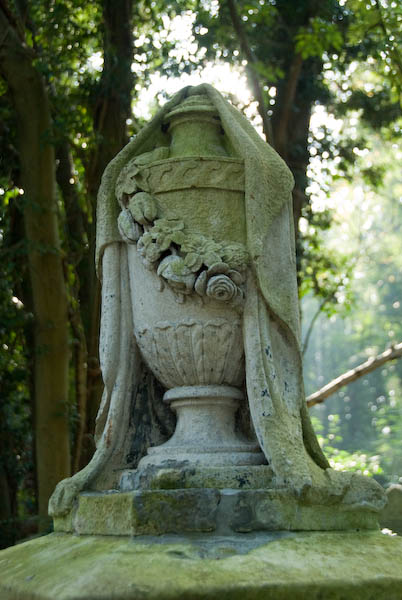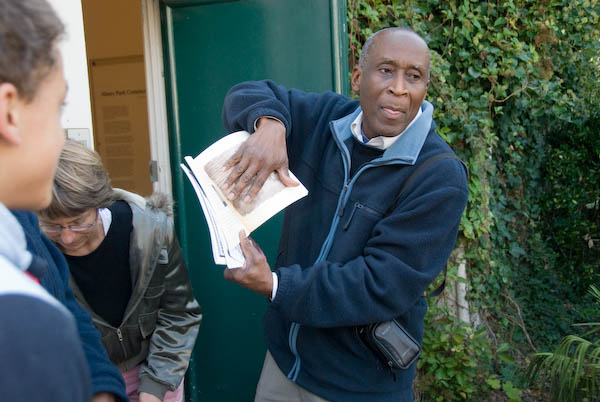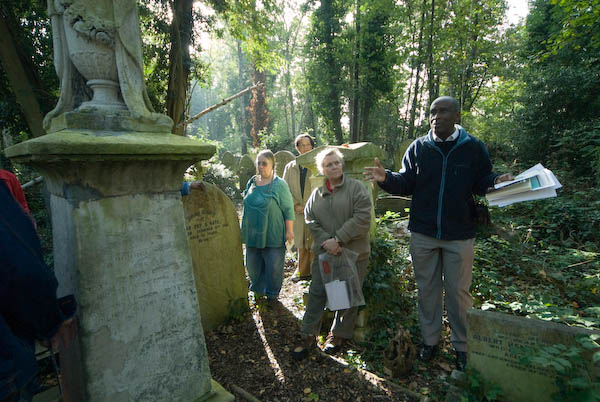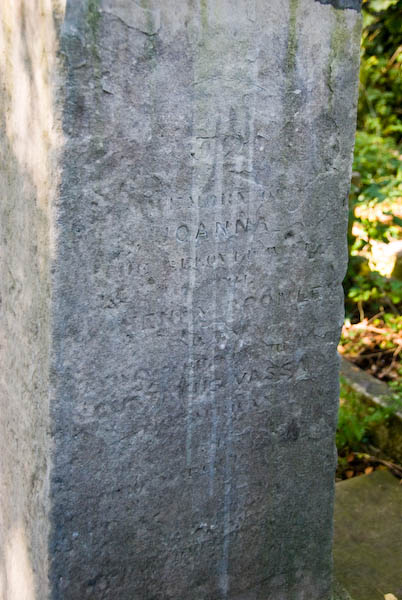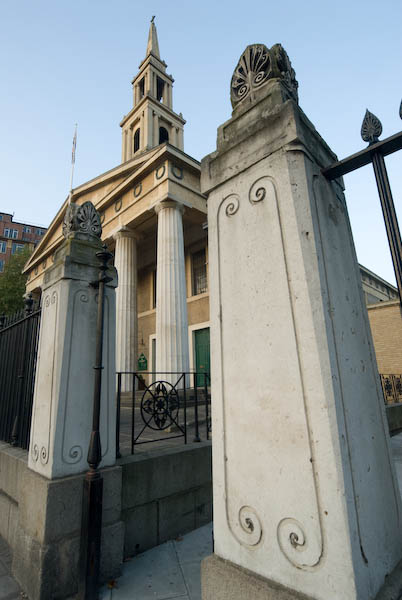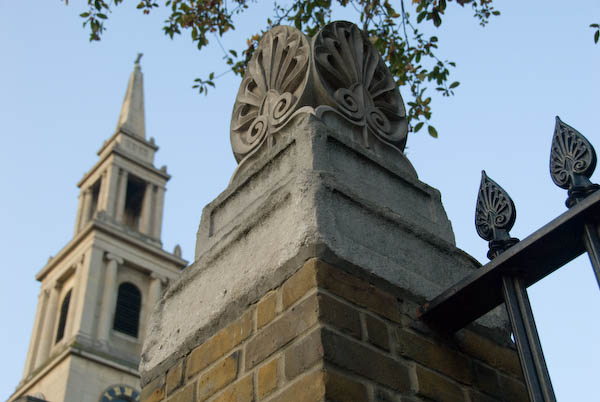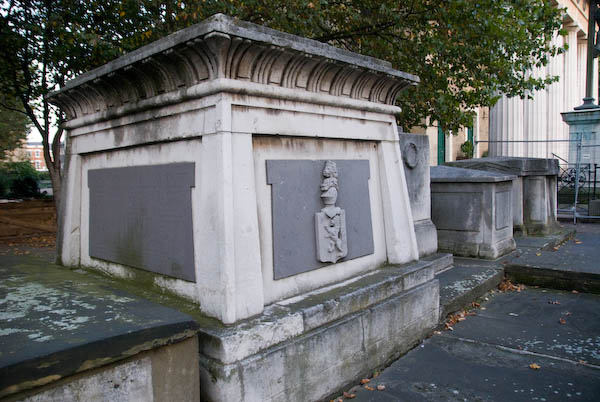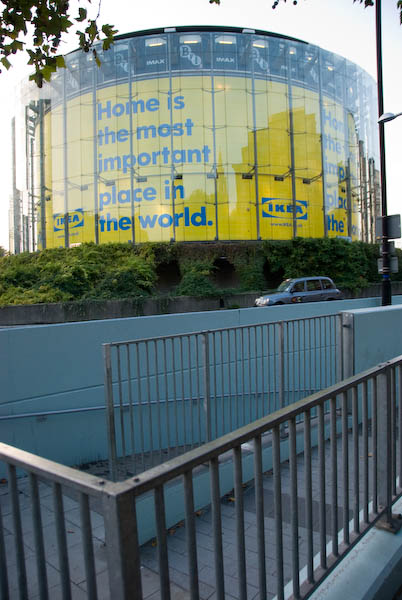Salvation, Statuettes, a Sexy Model, Spendel & More: Continuing my walk on Sunday 5th November 1989 from Green Lanes where the previous post, Stroud Green to Grand Parade had ended I walked some way down West Green Road before taking my next picture.
The Salvation Army building is still there on Terront Road though I think no longer in use by them. I was clearly attracted both by this building and by the car on a trailer to its left, rather dramatically marked with large Xs.
I wondered if this car might be connected with the clearance of the Harringay stadium site, about a kilometre away. Stock car racing and Banger racing were among the events held at Harringay Stadium from the 1950s on. The stadium had opened as Britain’s third greyhound racing stadium in 1927, adding speedway the following year. The stadium finally closed in 1987 and was acquired by Haringey council and some years later demolished for housing and a Sainsbury’s superstore.
It was only the 5th November so the Salvation Army were perhaps getting in rather early with advertising a Christmas Bazaar to be held on 18th Novemeber.
And perhaps this pair of Greek statuettes were the ideal Christmas Gift for someone, though I think it would have to be someone you didn’t like. But as you can tell from the price label they were quite small, and at £2.49 definitely a gift.
I decided not to make a great effort to correct the overall flare which renders their upper regions rather diffuse when making this digital copy from the original negative.
My walk was coming to an end and I walked back towards Turnpike Lane station finding another shop window which caught my interest on Green Lanes. There was something unusually real about this heavily made-up mannequin, wig, pose, and clothing, a sexual energy whose spell was only really broken by the clearly visible joint on her lower left arm and a rather porcelain quality to the highlights. I think this was probably in the window of a shop selling wedding dresses.
I took a number of pictures of this shopfront, which was I think part of the extensive station and bus station development. Most were in colour apart from this and a slightly tighter cropped black and white image. At least one of the colour images – also on Flickr – shows the the entire shopfront dominated at the top by the large word ‘HAIRDRESSER‘. In very small type at the top of the window it states ‘GENTS SALOON’ and scattered on the surface at the base of the windows in front of the shutters are boxes containing tubes of related products including Ingram shaving cream.
The window at left of the entrance contains two rather unhealthy looking pot plans and behind them is a poster for the pantomime Aladdin starring Michael Barrymore and Frank Bruno.
My walk on 5th November ended at Turnpike Lane, where I caught the Piccadilly Line to make my way towards home. But a week later I was back in the same area, returning first to Walthamstow – an easy journey on the Victoria Line before returning to Turnpike Road. I think I had gone back to Walthamstow to retake some colour images, hoping to find better light.
I’d photographed a large angel on my previous walk in the cemetery and this time I took a picture of a rather smaller one, but my main interest was in the shadows cast on a couple of the stones, one of my head and shoulders as I made the picture along with the fence and to the right a clear cross on a rather less clear fence shadow. I think I was probably standing outside the cemetery fence looking in.
The Shandar Take Away Restaurant at 65 on the corner of Queen’s Road and Lansdowne Road had a colourful mural along its Lansdowne Road side, and most of the pictures I took of it were in colour, but I stood a little further away on Queen’s Road to make this picture including a van with an open rear door parked on the pavement in front of a shop on the opposite corner.
Shandar is a name used by a number of Indian restaurants, a Hindi word implying excellence or high quality, which could be translated as ‘Splendid’ or ‘Grand’.
More from my walk on 12th November in a later post.
Flickr – Facebook – My London Diary – Hull Photos – Lea Valley – Paris
London’s Industrial Heritage – London Photos
All photographs on this page are copyright © Peter Marshall.
Contact me to buy prints or licence to reproduce.



























